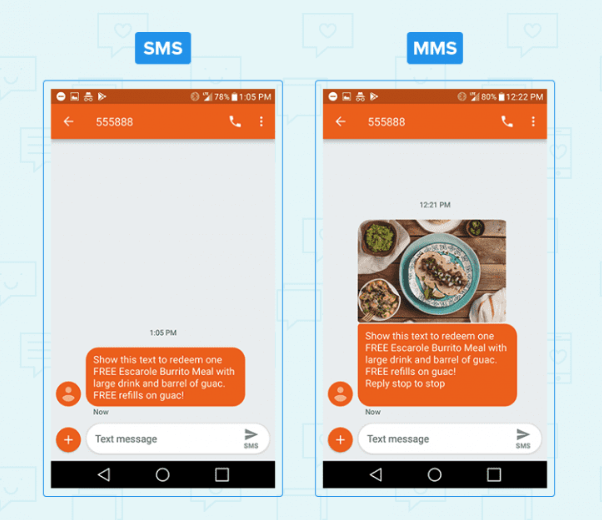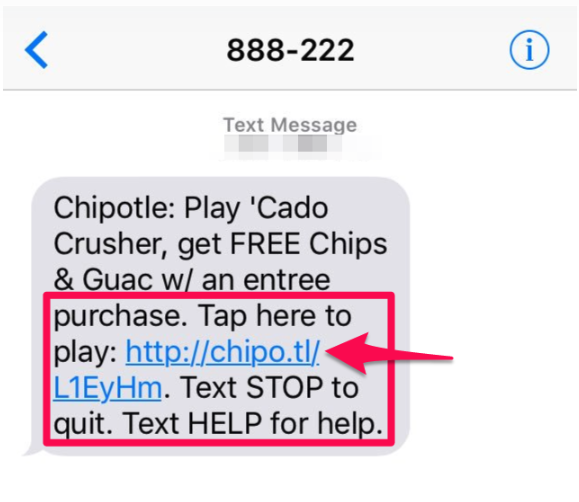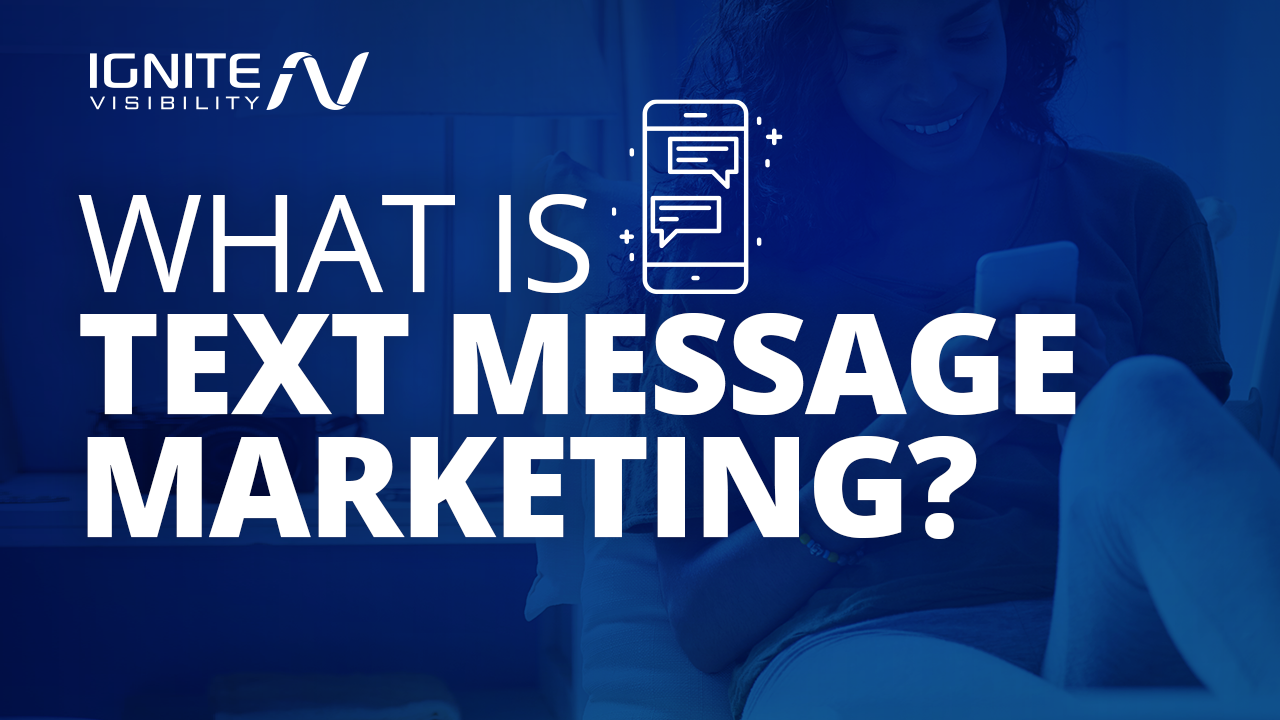What is text message marketing?
It’s a permission-based marketing tactic that brands can use to communicate with subscribers directly through their mobile devices.
It’s picked up a lot of steam over the past few years, and in this article, I’ll break it down for you in full.
You’ll learn:
- What text message marketing is
- How it works
- Why marketers should use it
- Laws and regulations to be aware of
- Text marketing best practices
Among today’s consumers, there’s a growing preference to communicate with brands using the same channels they use to connect with family and friends. As a result, text message marketing is becoming more and more relevant for marketers, both B2B and B2C.
Text comes with some huge advantages, too. Unlike other marketing tactics, texting offers a direct line to customers. Done right, this means that brands have an enormous opportunity to foster a personal connection with subscribers.
In this article, I’ll answer the question “what is text message marketing?” and go over the key things that brands need to know before launching a campaign.
What is Text Message Marketing?
Text message marketing is a permission-based marketing tactic that brands can use to communicate with subscribers directly.
There are two types of text messages you can use to reach customers. SMS and MMS. Here’s a quick breakdown of the differences and similarities:
SMS stands for short message service. It’s the most widely used form of text messaging and consists of a text-based message with a 160-character limit per message.
MMS, or Multimedia Messaging Service, was built using the same technology as SMS. The difference here is that MMS allows users to send multimedia content like pictures, videos, audio, and so on, via text.
Unlike SMS, MMS doesn’t come with a character limit, affording marketers more space to communicate their ideas.
This example from SimpleTexting shows the difference between the two in action:

The difference between SMS and MMS in text message marketing. Source
How Does Text Message Marketing Work?
To get started with text marketing, businesses must reserve a unique keyword and a short phone number, known as a shortcode.
You can choose to use your brand name or a word as your keyword, but it’s worth noting that you’ll want to make sure that your choice is both relevant and memorable.
Customers can opt-in to the program by texting the keyword to the shortcode, which adds them to a subscriber list.
When someone texts your keyword to your shortcode, they’ll typically receive an automated response from the brand confirming the opt-in, as well as a separate code for opting out if the customer wants to unsubscribe in the future.
As is the case with email marketing, your goal is to grow a list of subscribers so that you can nurture those leads into making a purchase. As such, you’ll need to promote your keyword and shortcode on your website, socials, and paid ads to drive opt-ins.
Think– “Text Example to 99988 for news updates and special offers.”
Why Use Text Message Marketing?
There are several benefits associated with text message marketing.
For one, text messages have a 98% open rate, with 90% of those opens happening within three minutes of receipt. As a point of reference, the average email open rate, as of 2019, was just over 22%.
Texts Are More Interactive Than Other Types of Marketing.
The immediacy of text messaging makes it easy to drive in-the-moment engagement. You might use texts to collect feedback with a quick survey or try a gamification strategy like Chipotle does in the example below to drive sales.

Use text marketing to collect feedback. Source
They’re Easy to Track
While each SMS marketing service offers different analytics tools, most leading platforms provide detailed analytics that tracks every step in the conversion process.
Trigger Text Campaigns Based on Actions
Marketers can set up SMS or MMS-based campaigns where messages are sent based on specific triggers, be it a reminder for an upcoming appointment like this one from a local therapist:

Send appointment reminders via text. Source
Or updates and notifications like KLM Royal Dutch Airlines uses here:

Use text marketing to send updates and notifications. Source
Or, this personalized abandoned cart reminder from Shopify, which entices the shopper to come back with a personalized offer:

Send personalized offers through text messages. Source
Text Marketing is Super Direct
Text-based marketing has a distinct advantage in its inherent directness.
Most consumers, regardless of segment, persona, or demographic group, have their smartphones with them 24/7. This means that, unlike email, marketers are more likely to reach their audience immediately.
Because people are more likely to open a text message than a promotional email, text is a great way to promote time-sensitive offers or share important updates.
Is Text Message Marketing Legal?
Yes, text message marketing is legal. However, there are some laws, regulations, and general best practices that you’ll need to keep in mind before blowing up subscribers’ phones.
While the threat of non-compliance with the Telephone Consumer Protection Act is understandably intimidating to a lot of businesses, the main takeaway is that you can’t text without permission.
Here’s a quick explainer that goes over the TCPA, as well as the Mobile Marketer Association and the Cellular Telecommunications Industry Association guidelines. Do note that I recommend reading the official rules yourself before you start texting customers.
TCPA
The Telephone Consumer Protection Act (TCPA), developed by the Federal Communications Commission, lays out some rules that brands must follow when using SMS as a marketing channel.
One of the main rules defined by the TCPA is that you absolutely must get consent from every contact before you can send them text messages.
It’s also worth pointing out that you can only text consumers between 8 a.m. and 9 p.m. This means that you’ll need to time your campaigns carefully, particularly if you’re marketing to a customer segment that spans several time zones.
CTIA and MMA
Both the Mobile Marketing Association (MMA) and the Cellular Telecommunications Industry Association (CTIA) offer up some general guidelines for SMS marketing.
While these guidelines aren’t legally binding, following these rules will help you avoid any advertising faux pas that could turn off your customers.
- Obtain opt-in consent before sending messages.
- Avoid using the term “free” unless you have a free-to-end-user program.
- All advertising copy should include a link to terms and conditions, program name, stop instructions, and a note that states “message and data rates may apply.”
- Give your customers a clear way to opt-out.
- Brands must keep opt-in and opt-out records for a minimum of six months.
- Marketing content cannot condone the use of alcohol, tobacco, or other drugs.
- You may need to require age verification for some marketing campaigns.
Text-Based Marketing Best Practices
The number one rule of text message marketing is to always obtain explicit consent before launching a campaign.
Once you’ve got the green light, there are some additional best practices to consider to ensure that your customers keep coming back.
Here are a few big ones to include in your campaign strategy:
Be Prepared to Respond in Real-Time
Again, one of the core benefits of texting your customers is the personal connection it offers. As such, you’ll want to allow them to reply and share their feedback.
Keep customers engaged by using an auto-responder to send personalized follow-up messages to your customers during off-hours.
Value and Transparency are Huge
When subscribers choose to subscribe to text-based updates, they do so because they expect to receive some type of benefit.
One of the simplest ways to bring value to your audience is to offer deals that are exclusive to your SMS subscribers. Additionally, you’ll want to use a variety of offers to keep things fresh, and target offers based on customer segments.
From the outset, you’ll want to tell your subscribers what they can expect from future communications. Are you sending news updates, special offers, flash sales?
If users expect to receive text messages about special offers only, don’t text them about company news updates.
Make Sure You Use Text Message Marketing Tools
These days, there’s no shortage of SMS marketing services. EZTexting is one of the more well-known examples, though some email marketing companies like ActiveCampaign and Sendinblue also offer text-based marketing services.
Consider whether you’d like to run SMS campaigns only, or if you’d like a service that includes MMS capabilities, as well.
Text-based marketing tools make it easy to track the results of your campaigns. Just like your email service provider, you can quickly review opens, clicks, and response rates.
Another benefit of using text-based marketing software is that you can automate your campaigns (again, just like email marketing).
This means that you’ll be able to schedule delivery times and send messages triggered by a specific action. For example, you might send delivery updates after a customer completes a purchase.
Timing Matters
Sure, timing matters for email or social media campaigns. But, getting it wrong on those channels typically means that fewer people will see your message.
With texting, sending messages at the wrong time is disruptive. Send an ill-timed SMS, and you risk waking your customers in the middle of the night.
SMSGlobal says that 10:30 am–11:30 am or 2:30 pm–3:30 pm are the best times to text customers. Most people are awake, and you’re likely not interrupting them during a meal or time with friends and family.
It’s also worth pointing out that timing extends to frequency, too.
Use text messages sparingly, as there’s really nothing worse than getting constant notifications from a business. I recommend limiting MMS/SMS communications to 2-5 per month.
Additionally, you’ll want to make sure to let your subscribers know how often they should expect to receive texts from your business upon sign-up.
For example, you might send something like this in your first message to give customers a sense of what to expect from your brand:
“Receive up to 5 msgs/ month”.
Personalize Your Messages
According to a recent Adobe study, personalized content outperforms generic content by 42%.
Not only do customers prefer personalized messages, they expect to receive contextually-relevant content from the brands they engage with, regardless of channel.
As such, you’ll need to make sure your text communications are relevant to the recipient. You can do this by segmenting your subscriber list and creating campaigns specific to each group.
Additionally, you’ll want to make sure that you not only acknowledge the recipient but that you make it clear where the message is coming from.
It’s annoying enough to get a message from an unknown personal contact, but an unidentified commercial text is a lot worse. If your subscribers can’t identify your brand by the content of your message, expect an opt-out in short order.
Be sure that each text you send covers these bases:
- Announce your brand name in each message.
- Use simple, conversational language and a familiar tone–one that reflects the same voice used on your website and social accounts.
- Address each recipient by name.
- Send offers based on location, recent activity, and known interests.
Wrapping Up
In today’s mobile-first world, it’s no wonder that text message marketing is one of the more effective ways for brands to connect with their customers.
Marketers need to be strategic about how they use text message marketing, as it’s easy to cross that line between value and irritation. Every message needs to surprise, delight, and respect the boundaries that come with such a direct communication channel.
Related Articles
Skipio vs. Textiful: Which Text Marketing Software to Use
Text message marketing is a powerful way to cut through the noise and connect with audiences on the channel they use most—their phones. In this article, I look at two platforms, Skipio and Textiful that can help you manage your campaigns.
15 Email Marketing Campaign Ideas that are Proven to Drive Sales
Despite the wide range of channels available for reaching customers, email marketing is here to stay. Still, brands must get creative with their strategy to secure opens, clicks, and conversions. From social proof to personalization, this article covers some of my favorite ways to drive sales with email.
7 Ways to Build Brand Trust through Marketing
Brand trust is becoming an increasingly vital differentiator for digital marketers—something that both Google and your customers value tremendously. In this article, I look at seven ways you can improve your trust signals to win more loyal customers.
What is a Chatbot? Plus Best Chatbot Examples You Can Steal
Chatbots are now the norm for many customer service interactions, used to answer questions, direct visitors to the right page, and even collect valuable insights for lead nurturing campaigns. Here, I’ll go over some key things to know about chatbots and which brands are really nailing this strategy.
22 Mobile Marketing Strategies to Drive More Traffic
With Google’s now using a mobile-first index and an audience that keeps their devices within reach, brands need to focus on creating better experiences for the small screen. This article covers 22 mobile marketing strategies, with examples from real brands.
11 Tips for B2B Email Marketing
Email remains one of the best ways for B2Bs to reach their target audience. This article covers some best practices for driving results with B2B email marketing that you can apply to your own strategy.
